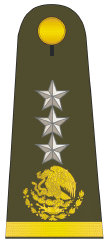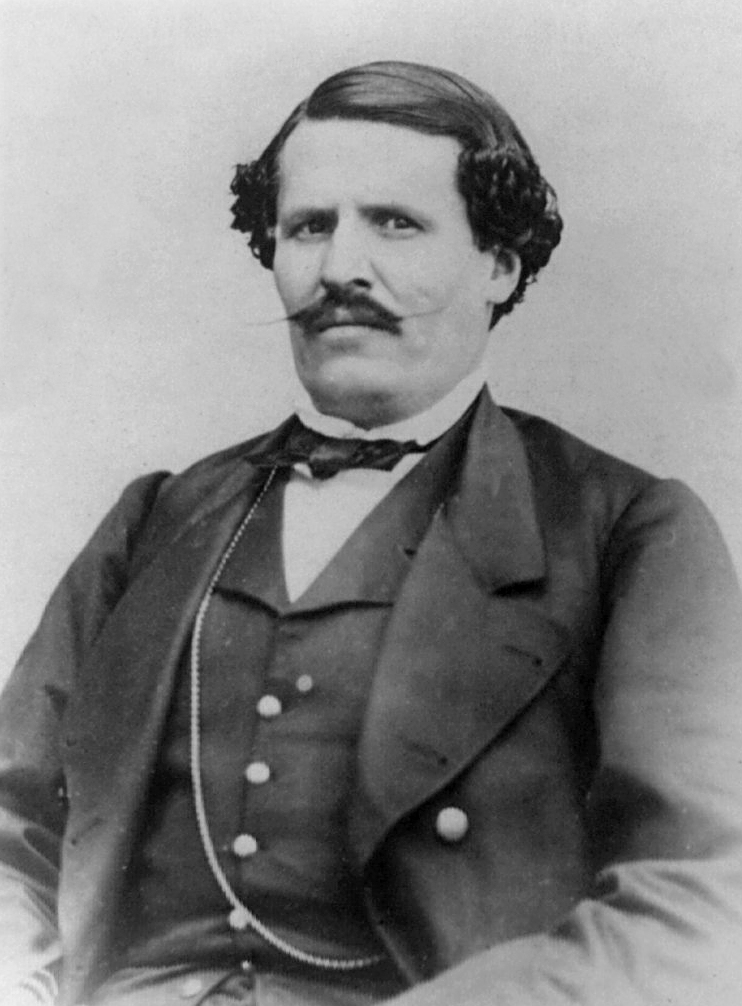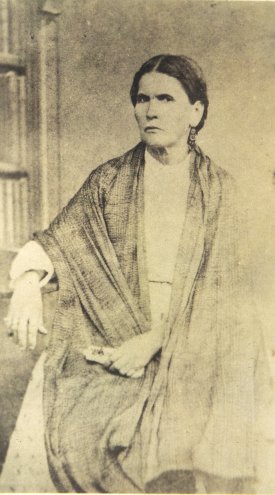|
Second Franco-Mexican War
The Second French Intervention in Mexico ( es, Segunda intervención francesa en México), also known as the Second Franco-Mexican War (1861–1867), was an invasion of Mexico, launched in late 1862 by the Second French Empire, which hoped to replace the Mexican Republic with a monarchy favorable to French interests. After the administration of Mexican President Benito Juárez placed a moratorium on foreign debt payments in 1861, France, the United Kingdom, and Spain agreed to the Convention of London, a joint effort to ensure that debt repayments from Mexico would be forthcoming. On 8 December 1861, the three navies disembarked their troops at the port city of Veracruz, on the Gulf of Mexico. However, when the British discovered that France had an ulterior motive and unilaterally planned to seize Mexico, the United Kingdom separately negotiated an agreement with Mexico to settle the debt issues and withdrew from the country; Spain subsequently left as well. The resulting Fren ... [...More Info...] [...Related Items...] OR: [Wikipedia] [Google] [Baidu] |
Siege Of Puebla (1863)
The siege of Puebla occurred between 16 March and 17 May 1863 during the Second French intervention in Mexico, between forces of the Second French Empire and forces of the Second Federal Republic of Mexico. The French were advancing toward Mexico City, and were blocked by Mexican troops at Puebla, Puebla, Puebla. Background French forces had advanced toward Mexico City in 1862, but were Battle of Puebla, defeated at Puebla on 5 May 1862. General Charles de Lorencez was dismissed and replaced by Élie Frédéric Forey, General Forey, who arrived at Veracruz in September 1862. During the winter, the French prepared for a new campaign in spring 1863, while in Puebla, Mexican forces under the command of General Ortega built new fortifications, including ''Fuerte'' ("fort") San Javier. Siege The siege began on 16 March with an encircling movement led by Generals Bazaine and Douay. By 18 March, encirclement was effective and by 22 March, a relief attempt by Mexican troops from Cho ... [...More Info...] [...Related Items...] OR: [Wikipedia] [Google] [Baidu] |
Confederate Colonies
Confederate colonies were made up of Confederate refugees who were displaced or fled their homes during or immediately after the American Civil War. They migrated to various countries, but especially Brazil, where slavery remained legal, and to a lesser extent Mexico and British Honduras (modern Belize). Background Many Southerners had lost their land during the war and some were unwilling to live under the Federal government. They did not expect an improvement in the South's economic position. Most of the emigrants were from the states of Alabama, Texas, Louisiana, Mississippi, Georgia, South Carolina, and Missouri. It is unknown how many American southerners emigrated to Latin America. As noted in unpublished research, Betty Antunes de Oliveira found in port records of Rio de Janeiro that some 20,000 Americans entered Brazil from 1865 to 1885. Other researchers have estimated the number at 10,000.Tigay, Alan M.The Deepest South. ''American Heritage''. 49 (2). April 1998. pp. 8 ... [...More Info...] [...Related Items...] OR: [Wikipedia] [Google] [Baidu] |
Pedro José Méndez
Pedro José Méndez Ortiz was a Mexican general who was from the state of Tamaulipas. He led a group of guerrillas called "Fieles de Hidalgo" during the Second French intervention in Mexico. Childhood Pedro José Méndez Ortiz was born on November 22, 1836, at the San Agustín hacienda, located in the municipality of Hidalgo, Tamaulipas, Mexico. His parents were the landowner Don Pedro J. Méndez and his wife Doña Agapita Ortiz. Méndez began his studies at the age of six in a primary school in Ciudad Victoria. At sixteen, Pedro J. Méndez lost his father, forcing him to return to country life to aid his family. Coup d'état In 1858, President Ignacio Comonfort's coup d'état was taking place in Mexico and with the formation of the Liberal and Conservative parties there were those who sought to suppress the newly sworn Federal Constitution of the United Mexican States of 1857. Pedro José Méndez always showed loyalty to President Benito Juárez and to the Constitution. French ... [...More Info...] [...Related Items...] OR: [Wikipedia] [Google] [Baidu] |
Miguel Negrete
José Miguel Pascual Negrete Novoa, commonly known as Miguel Negrete was a 19th-century Mexican Major General. He participated in the many Mexican Civil Wars, as well as the Mexican–American War and the Second French intervention in Mexico. Negrete was also the Governor of Puebla from October 13, 1863, to November 4, 1863, and the Minister of War and Navy of Mexico from March 16, 1864, to August 23, 1865 Mexican–American War and Ayutla Revolution He was the son of Cayetano Negrete and Aparicia Novoa. Miguel Negrete fought against the Americans during the Mexican–American War. In 1855 he took up arms in Zamora, Michoacán, during the Ayutla Revolution in support of the liberal forces with the aim of overthrowing the dictatorship of Antonio López de Santa Anna and was promoted to colonel after these conflicts. Reform War After the pronouncement of Félix Zuloaga's Plan de Tacubaya against the government of Ignacio Comonfort and the Federal Constitution of 1857, Negrete dec ... [...More Info...] [...Related Items...] OR: [Wikipedia] [Google] [Baidu] |
José María Jesús Carbajal
José María Jesús Carbajal (1809–1874) (also spelled Carvajal, Caravajal, Carabajal, and Carbahal) was a Mexican Tejano who opposed the Centralist government installed by Antonio López de Santa Anna, but was a conscientious objector who refused to take up arms against his own people. Mexican conscientious objectors paid a price for their refusals, in that Texan Brigadier General Thomas Jefferson Rusk confiscated the homes of those who wished to remain neutral in the war. In July 1836, Rusk ordered the Carbajal and other Tejano families of Victoria escorted off their own land. They took refuge in New Orleans. Carbajal was a direct descendant of Andres Hernandez and Juana de Hoyos (1709-?) (m.1729) of the settling Spanish soldier's founders of Villa de Bejar in 1718 and Canary Islands settlers who immigrated to San Antonio, Texas in the 18th Century. As a teenager in San Antonio, he was mentored by Stephen F. Austin and came under the spiritual guidance of Alexander Campbell w ... [...More Info...] [...Related Items...] OR: [Wikipedia] [Google] [Baidu] |
José María Chávez Alonso
José María Chávez Alonso (26 February 1812, Encarnación de Díaz, Jalisco, Mexico. – 5 April 1864, Mal Paso, Zacatecas) was a Mexican politician. He served as the governor of the state of Aguascalientes from 1862 to 1863. In 1818, he moved with his family to the city of Aguascalientes where he attended public school and learned carpentry. He gravitated toward the liberal side in politics, and was the editor of several newspapers and local magazines. He was a deputy in the local congress that promulgated the state constitution of 1857. He was elected governor on 20 October 1862. On that same date, the French intervention in Mexico occurred, and on 20 December 1863 the city of Aguascalientes was occupied by the French army and their monarchic Mexican allies. He served as part of a militia resisting the invasion and patrolled several towns bordering Zacatecas. However, the army was defeated and captured by the French in the town of Jerez Jerez de la Frontera (), or simp ... [...More Info...] [...Related Items...] OR: [Wikipedia] [Google] [Baidu] |
Luigi Ghilardi
Luigi Ghilardi, also known as Luis Ghilardi, was an Italian general who fought in many different conflicts during the 19th century, and who advocated for republican ideals. His parents were Nicolás Ghilardi and Isabel Lucchesi. As a young man he enlisted to fight in liberal movements in Europe. In 1840 he married Francisca Anguera with whom he had a daughter named Ana. He participated in the First Italian War of Independence. Later he visited Mexico where he fought alongside the liberals in the . He returned to Italy and tried to join the army, failing to do so he returned to Mexico where he fought against the French Intervention. He was later captured by the French and executed. Military Actions in Europe Possibly influenced by the ideas of Giuseppe Mazzini, he was attracted to liberal and republican ideals. As a result of the repression following the 1820 revolution in Italy, several republicans fled the peninsula. Ghilardi fought in various liberal movements during the revol ... [...More Info...] [...Related Items...] OR: [Wikipedia] [Google] [Baidu] |
José María Arteaga
José María Cayetano Arteaga Magallanes (August 7, 1827 - October 21, 1865) was a prominent Mexican politician and general who served in the Mexican–American War, Reform War and the Second French intervention in Mexico. Executed by Imperial forces during that invasion, Arteaga was recognized as one of the ''Martyrs of Uruapan.'' Biography Early life José was born on August 7, 1827, as the son of Don Manuel Arteaga and Doña María Polonia Magallanes. Being originally from Mexico City, his family moved to Hidalgo soon after. He graduated from the public schools of that same city and later dedicated himself to the tailoring trade. As a result of the Mexican–American War he left the tailor shop to become a soldier at the age of 20. In 1852 he entered the army, starting as first sergeant of the Aguascalientes active battalion. By 1854 he had the position of captain of the third light infantry belonging to the brigade under the orders of the conservative Félix Zuloaga, fightin ... [...More Info...] [...Related Items...] OR: [Wikipedia] [Google] [Baidu] |
Carlos Salazar Ruiz
Carlos Benito Salazar Ruiz was a Mexican General, martyr of Uruapan and the son of Captain Benito Salazar Vargas and Mercedes Ruiz Castañeda.http://cdigital.dgb.uanl.mx/la/1080009034/1080009034_55.pdf He is notable for his participation in several revolutions and battles during 19th-century Mexico. Biography In his childhood he was kicked by a horse after he pulled its tail and his forehead would be marked with that scar all his life. Partly because of his concern and partly because of his scar, they said he looked like "the devil himself." During his youth he entered the Heroico Colegio Militar, he was a companion of the liberal Leandro Valle and the conservative Miguel Miramón. While still a cadet, he joined Leonardo Márquez's army as a volunteer, days before the Battle of Churubusco. He was wounded in the leg and he received an honorary medal and an epaulet on his left shoulder for his bravery but he saw indignantly since his convalescence, Mexico surrendered to the United ... [...More Info...] [...Related Items...] OR: [Wikipedia] [Google] [Baidu] |
Jesús González Ortega
Jesús González Ortega (Valparaíso, Zacatecas, January 20, 1822 - Saltillo, Coahuila, February 28, 1881) was a Mexican soldier and politician; governor of Zacatecas (state), Zacatecas who was a notable ally of President Benito Juárez during the War of Reform and during the Second French intervention in Mexico, French intervention in Mexico. He is notable for defending the city of Puebla from the French army March 16, 1863 to May 16, 1863. During the French Intervention he had a falling out with Juarez, due to the fact that in 1865, the presidency was constitutionally supposed to pass to Gonzales Ortega, but Juarez held on to power due to the extraordinary circumstances, a situation that was accepted by most of the liberal party. He continued to champion his claim to the presidency, leading to his arrest in 1867 and shortly afterward, his supporter José María Patoni was kidnapped and murdered by General Benigno Canto, leading to rumors and an allegation from Canto himself that ... [...More Info...] [...Related Items...] OR: [Wikipedia] [Google] [Baidu] |
Ignacio Zaragoza
Ignacio Zaragoza Seguín (; March 24, 1829September 8, 1862) was a Mexican general and politician. He led the Mexican army of 600 men that defeated 6,500 invading French forces, including the elite French legionnaires at the Battle of Puebla on May 5, 1862 (mostly celebrated in the United States as ''Cinco de Mayo''). Early life Ignacio Zaragoza was born in the Mexican province of Texas, in the village of Bahía del Espíritu Santo, in the state of Coahuila y Tejas (now Goliad, Texas, in the United States) on March 24th in 1829. From birth, Zaragoza seemed destined to be a man who worked for the government, as his father, Miguel Zaragoza, met his mother, Maria, while on duty and stationed at Bexar in 1825. At the time the area was the Mexican state of Coahuila y Texas. Zaragoza was the son of Miguel G. Zaragoza and María de Jesús Seguín, who was a niece of Erasmo Seguín and cousin of Juan Seguín. This was not a particularly wealthy upbringing for Zaragoza, until the ... [...More Info...] [...Related Items...] OR: [Wikipedia] [Google] [Baidu] |
Porfirio Díaz
José de la Cruz Porfirio Díaz Mori ( or ; ; 15 September 1830 – 2 July 1915), known as Porfirio Díaz, was a Mexican general and politician who served seven terms as President of Mexico, a total of 31 years, from 28 November 1876 to 6 December 1876, 17 February 1877 to 1 December 1880 and from 1 December 1884 to 25 May 1911. The entire period from 1876 to 1911 is often referred to as Porfiriato and has been characterized as a ''de facto'' dictatorship. A veteran of the War of the Reform (1858–1860) and the French intervention in Mexico (1862–1867), Díaz rose to the rank of general, leading republican troops against the French-backed rule of Maximilian I. He subsequently revolted against presidents Benito Juárez and Sebastián Lerdo de Tejada on the principle of no re-election. Díaz succeeded in seizing power, ousting Lerdo in a coup in 1876, with the help of his political supporters, and was elected in 1877. In 1880, he stepped down and his political ally Manuel ... [...More Info...] [...Related Items...] OR: [Wikipedia] [Google] [Baidu] |






